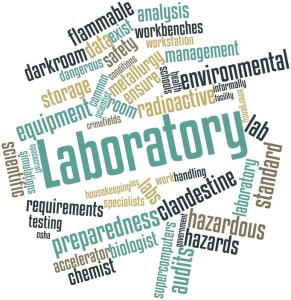 OSHA regulations can sometimes feel overwhelming, but it is legally required for every office to understand work-related hazards and train employees on how they can protect themselves. Here, we’ve broken it down and focused on the top 10 basic requirements that every veterinary office should follow to avoid OSHA fines and audits.
OSHA regulations can sometimes feel overwhelming, but it is legally required for every office to understand work-related hazards and train employees on how they can protect themselves. Here, we’ve broken it down and focused on the top 10 basic requirements that every veterinary office should follow to avoid OSHA fines and audits.
1) Labels
How to Comply:
- Signage must be updated to the GHS global standard; older diamond labels with a number system will be changed to pictograms with the words “danger” or “warning” (you may only keep the diamond labels as long as they convey all required information)
- Train employees on what each hazardous chemical is, how the chemical is dangerous and how to stay safe around it
- Any bottle that is a “secondary container” of a chemical must be clearly labelled by hand with a permanent marker and include the following information: chemical name & pictogram/diamond showing what personal protection equipment is required
- All material safety data sheets (MSDS) must be updated with the new safety data sheets (SDS) with a 16-section format
2) Documents
How to Comply:
- Train new employees immediately regarding OSHA compliance
- Plan refresher training for all employees once a year and keep signed documents that prove attendance at the training meetings
- Keep important documents like health records and emergency contact information for all employees on file
- Have an annual safety review and be sure to update the hazard communication plan
- Display the OSHA 300 forms, which summarize all reportable injuries that have occurred) in a conspicuous place
3) Radiation Protection
How to Comply:
- Employees in the radiology room must wear a protective gown, leaded gloves, a thyroid shield and leaded glasses
- Avoid having employees in the radiology room if sedated patients can be placed in a position that does not require human “holders”
- A dosimeter, or radiation badge, must be worn by people taking the radiograph and the radiation exposure report from the dosimeter company should be posted in open view
4) Protection Control
How to Comply:
- Educate your employees about how to stay safe around animals that have zoonotic diseases, like rabies
- Practice an evacuation plan
- Draw up an accident investigation plan and have all necessary forms on hand
5) Food & Drinks
How to Comply:
- Only allow food and drink in the designated break or lunch room
- Keep lab samples, medications and diagnostic chemical reagents in its own refrigerator
- OSHA specifies that open cups are not allowed, but closed containers with a small opening are acceptable
6) Hearing Protection
How to Comply:
- At the very least, you should keep foam ear plugs on hand in cases of excessive noise or barking
7) Signage
How to Comply:
- Clearly mark exits, fire extinguishers and eyewash stations
- Consider “Employees Only” signs in areas that pet owners shouldn’t be in (such as radiology)
- Signage can also notify employees of other health hazards like laser and anesthetic gases
8) Eyewash
How to Comply:
- Eyewash stations are a necessity, especially in the lab where employees are most prone to chemical exposure
- Test eyewash stations monthly
9) Shoes
How to Comply:
- Enforce employees to wear impermeable shoes that are completely enclosed (meaning they should be able to protect the wearer from any of the following: sharp objects, chemicals and contamination of skin by zoonotic agents)
10) Chemicals
How to Comply:
- Create a directory/index of all the dangerous chemicals in your office that has the following information for each product: name, chemical, manufacturer name and manufacturer phone number
It is important to understand that OSHA compliance is not a one-time endeavor. Offices must continually reevaluate and adjust their plan, as well as comply with any new OSHA requirements that may come up in the future. If you would like to learn how PureWay can help your office become more OSHA-compliant, please feel free to contact our dedicated Certified Safety Healthcare Professionals (CHSP) at 877-765-3030 or visit our online PureWay Store to see the full list of OSHA & Infection Control solutions that we offer.
Citations
http://www.veterinarypracticenews.com/10-Steps-To-OSHA-Compliance/





